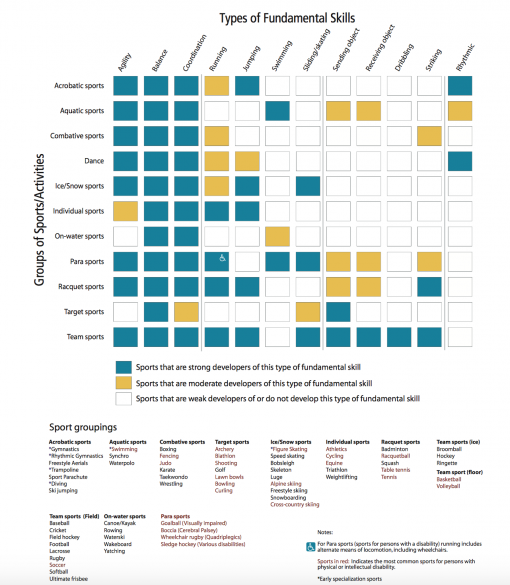Physical Literacy: Learning to Train
August 4, 2017
This week, we continue our series on physical literacy by exploring the third stage of physical literacy development. Once a child moves through the Active Start and FUNdamentals phases, they are ready to begin the third stage. This stage is often referred to as the “Learning to Train” or “Learning to Play and Practice” stage.

The Learning to Train phase takes place from age 9 to 12 for boys, and 8 to 11 for girls. At this point, children should possess fundamental movement skills that allow them to progress into more complex actions. During the Learning to Train phase, kids develop fine motor skills and sport-specific skills at an accelerated pace. This phase focuses on empowering children to pursue movement in their daily lives in a fun, safe environment.
For a better idea of how this progression from stage two to stage three can work, let’s look at an example. During the FUNdamentals stage, a child learns fundamental movement skills. This includes throwing. During this early stage, throwing can be learned with any size ball and can include one or two hands. As the child moves into the Learning to Train stage, instruction shifts to sport-specific skills and fine motor skills. In this case, the child could progress from basic throwing movements to learning how to throw a baseball with accuracy or how to execute a proper soccer throw-in.
As children begin to learn sport-specific skills, their focus should remain on sport-sampling. At this stage of development, specializing in one sport can be harmful to a child’s physical development. Studies suggest, early sport-specialization can lead to overuse injuries, fatigue, and mental burnout. Using a multi-sport approach to teach fine motor skills allows children to develop a broad range of movements. This prepares them to be better athletes and increases their overall physical aptitude.
This stage can be one of the most fun phases of physical literacy development. Children use the skills they learned in previous stages to participate in their favorite sports and games. As they progress in their skill development, children gain a sense of accomplishment. They take pride in their abilities as they begin to reap the benefits of their practice and training. Children also get to experiment with a range of sports and identify which ones they find most appealing.
Children exit this stage of physical literacy development once they enter puberty. After entering adolescence, physical changes and rapid growth alter a child’s ability to learn fundamental movement skills. This is why it is crucial that all children are physically literate by age twelve. This ensures that they are able to pursue a lifetime of sports and other physical activities.
For more information on the Learning to Train stage, or for activity ideas, click the links below.
Active For Life – Activity Ideas and Resources
Canadian Sport Centre – Introduction to Physical Literacy
Canadian Sport Centre – Physical Literacy Guide

Courtesy of Canadian Sport Centre